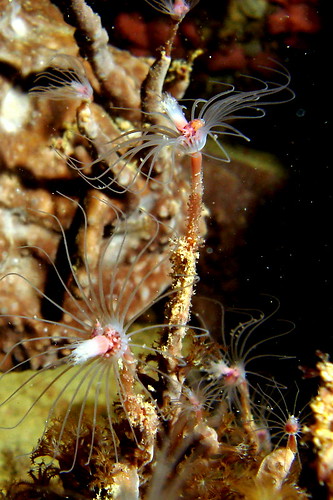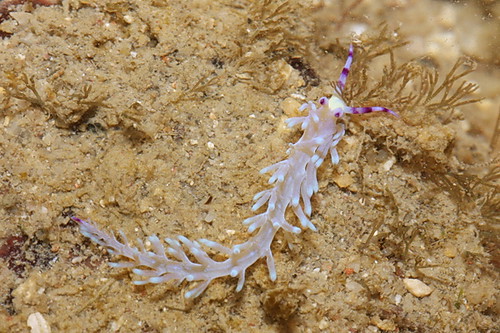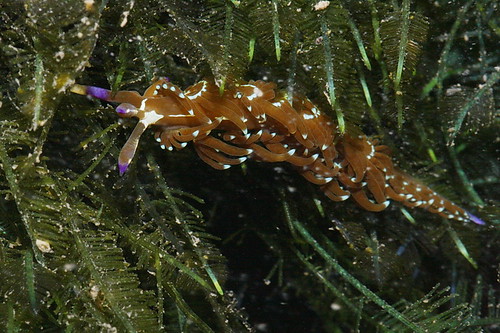
Beting Bronok;
(Photo by Ria)
Yes, even soft, spineless creatures can be named after dragons.
The blue dragon nudibranch (Pteraeolidia ianthina) is an inhabitant of reefs throughout the tropical and subtropical Indo-West Pacific, and is a relatively common nudibranch in Singapore. It's small, at just 3 to 5 centimetres long, but the tufts of often bright blue projections from its body (known as cerata) definitely make it stand out.

Beting Bronok;

Kusu Island;
(Photos by Ria)
The blue dragon nudibranch, like most other nudibranchs, is a carnivore, specialising on relatives of corals and jellyfishes known as hydroids. Adults in particular seem to favour hydroids belonging to the genus Ralpharia. Juveniles, on the other hand, have been seen among a different sort of hydroid, one that forms short, fuzzy growths, almost like a miniature 'turf'.

Ralpharia magnifica, Victoria;
(Photo by Greg Fisk)
Interestingly enough, the blue dragon nudibranch is a slug that has actually managed to harness the power of the sun. It harbours symbiotic zooxanthellae within ducts of the digestive gland in the cerata and in the body wall. And just like how these zooxanthellae sustain organisms such as hard corals and giant clams, so these symbionts manufacture sugars through photosynthesis, which the host (in this case, the nudibranch) absorbs for its own growth and nourishment. Blue dragon nudibranchs can supposedly go without food for some time, sustained by the energy produced by the zooxanthellae in their bodies.

Sisters Islands;
(Photo by Ria)
Unlike other solar-powered sea slugs, which sequester chloroplasts from the algae they consume, the blue dragon nudibranch and many other nudibranchs that have adopted this ability to 'farm' and nurture zooxanthellae within their tissues first obtain zooxanthellae from the prey they consume. However, in the case of the blue dragon nudibranch, the hydroids that it's known to feed on lack zooxanthellae, so the source of its zooxanthellae remains unknown. Is it absorbing zooxanthellae from the surrounding seawater? Or is there another prey species that is supplying the blue dragon nudibranch with zooxanthellae?

St. John's Island;
(Photo by James)
Young blue dragon nudibranchs lack zooxanthellae and tend to be pale, nearly whitish in colour. Only after developing their own crop of zooxanthellae do they take on a more brownish coloration.

Pulau Semakau;
(Photos by James)
Coming up next, another slug that is also sometimes called the blue dragon.